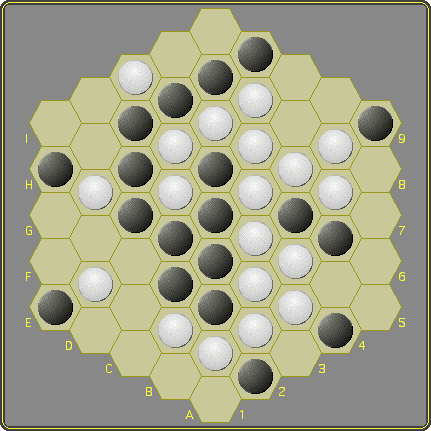 | Qascade is a 'largest group, cascading' connection game , meaning that in case the game ends with an equal score, the next largest groups are compared and so on, till an unequal score results. It uses the one bound - one free opening protocol and cannot end in a draw. Rules There are two players, Black and White. Each has a sufficient number of stones and both place only with their own color. A 'group' is a full number of connected like-colored stones. A single stone is a group by definition. The game starts on an empty hexhex board, base 4-7 depending on preference. White moves first, after which turns alternate. The restricted placement phase White starts by placing one stone on the empty board. From that point on players take turns to:
|
Both placements are compulsory. When the player to move can no longer make the second placement, then his turn ends and his opponent may start the free placement phase. The number of white and black stones will always be equal, although the 'density' of the position may vary and either player may end up being the one to start the next phase.
The free placement phase
In this phase players take turns to compulsory place one stone on a vacant cell and optionally turn three cells around a triple vertex.
Object
The game ends when the board is full and the player with the largest group wins. If the score is equal, then the players' next largest groups are compared, and so on till an unequal score is reached. Draws are impossible on boards with an odd number of cells (like hexhex boards).
How I invented ... Qascade
Play Qascade interactively or against AI
Qascade © MindSports
